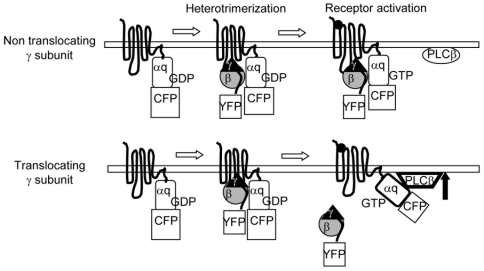Figure 8. Model for the basis of differential responses to the activation of a tethered αq subunit.
The tethered αq subunit when bound to a non-translocating γ subunit is unable to activate PLCβ after receptor activation because of its continued association with βγ and the inflexibility of the α subunit that is fused to the C terminus of the receptor. The effector activating surface of the αq subunit and the βγ complex do not become accessible to PLC β in this situation. In contrast, when the tethered αq subunit is bound to a γ subunit that is capable of translocation away from the plasma membrane on receptor activation, the effector activating surface of the α subunit is exposed to PLC β allowing it to activate the effector molecule.

